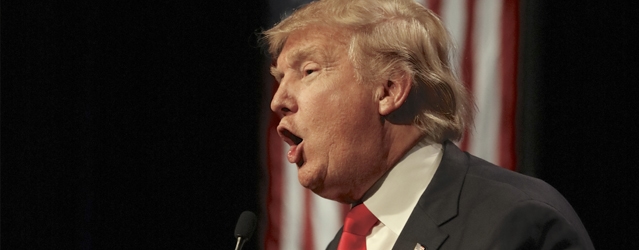The latest tax and regulatory reforms in the US are intended to woo more corporate investment from abroad, but they offer both pros and cons that vary widely from sector to sector.

Executives around the world, including the US itself, are studying Trump’s claim. The reduction in the top federal corporate tax rate from 35% to 21% that was passed in December is certainly an investment incentive. But wading through the 500-page text of the 2017 Tax Cuts and Jobs Act, experts find more incentive for some investors than others. Capital-intensive businesses focused on US domestic sales are best positioned to take advantage. Automaker Fiat Chrysler, for instance, announced it would spend more than $1 billion to move Ram truck production from Mexico to Michigan, partially crediting tax reform.
“At this point, 90% of the client conversations are figuring out what the new rules are,” says Rohit Kumar, a former top aide to Senate Republican leader Mitch McConnell who now leads the Tax Policy Services practice at consultant PWC. “I’m only starting to see questions about making business changes in response.”
More Than Just Tax Reform
Tax relief does not take place in a vacuum. Trump’s deregulation push has focused on environmental strictures, which he sees as restraining investment in manufacturing and the extractive industries. He got his biggest corporate boost from oil-giant Exxon Mobil, which credited tax reform as a factor behind $35 billion in planned US investment over the next five years. But the president is meeting fierce resistance on this front from state governments, led by California, the sixth-largest global economy in itself. Even reliably Republican states like South Carolina and Georgia are pushing back against the administration’s plan to open great swathes of the US coast—more than 90% of the US outer continental shelf—to oil and gas exploration.
Trump’s push to attract manufacturing may conflict with another of his core promises: revising international trade rules in favor of the US. Companies of any size that make things are deeply embedded in global supply chains that may be undermined by the administration’s wide-ranging protectionist threats. In February, the Commerce Department recommended imposing an import levy of “at least” 24% on steel and 7.7% on aluminum, over the vociferous objections of metal-consuming industries from cars to beverages.
The inconvenience of paying more for vital inputs would be nothing compared to the havoc created by abrogating the North American Free Trade Agreement (NAFTA). Automakers, among others, have become dependent on a seamless connection with Mexico (and to a lesser extent Canada) over the quarter century since NAFTA was signed. “You have products that move back and forth across the Mexican border five or six times during the manufacturing process,” says Justin Rose, a Boston Consulting Group partner who heads the industrial digitization practice, adding, “It’s a truly integrated production system that yields a great deal of value.” That value’s destruction could negate tax reform’s positive effect on US investment, according to Mark Weinberger, global chairman and CEO of consultant Ernst & Young.
Trump is also supporting moves that could impair investment—namely a congressional bill that would expand the mandate of the Committee on Foreign Investment in the United States (CFIUS), which screens proposed deals on national security grounds. This Foreign Investment Risk Review Management Act would empower CFIUS to review any acquisition that “is likely to reduce the technological and industrial advantage of the United States relative to any country of special concern.”
One country that draws “special concern” is China. One sign of a harder line on China came in February, when the Securities and Exchange Commission nixed a bid for the Chicago Stock Exchange by Chongqing Casin Enterprise Group. Free traders warn that the bill’s language is broad enough to apply to nearly any inward investment. “These ‘reforms’ of CFIUS constitute a fundamental departure that would unavoidably put the US government in the business of picking and choosing which areas to protect,” writes Theodore Moran, a Georgetown University professor and fellow at the Peterson Institute for International Economics in Washington.
Oddly excluded from the conversation on competitiveness are the healthcare costs that large employers bear in the US. While exact comparisons are tricky, US companies pay 23% of an average worker’s wage or salary for health premiums—$5.65 per hour for health—according to the national Bureau of Labor Statistics. That compares to national health taxes of 13.85% in the UK and 9.8% in Germany.
What’s more, the recent corporate tax cuts are on shaky ground politically. The last major US tax overhaul, shepherded by Republican president Ronald Reagan in 1986, passed the Senate 97 to 3. The 2017 version squeaked through 51 to 48, without a single Yes vote from a Democrat, and brings on a $1.5 trillion increase in the ballooning national debt. All that makes a reversal likely if the Democrats regain power in Washington, which they may well do before the end of a capital investment cycle. “The corporate tax system remains unstable from a political perspective,” says Edward Kleinbard, an ex-chief of staff at Congress’s Joint Committee on Taxation who now teaches at the University of Southern California’s Gould School of Law. “We’re more likely to see rates settle around 25% five years from now.”
Carrots And Sticks
None of that means global executives should ignore Trump’s “Open for Business” sign. The average effective corporate tax rate in the US under the old regime, in 2012, was 29%, according to the Congressional Budget Office, lower than the nominal levy but still higher than any major competitor. (The bite in Japan is 27.9%; France, 20%; Germany, 14.7%.) The drop to 21% (at most) will particularly benefit industries, like utilities or banks, with little opportunity for diverting income offshore, says Dustin Stamper, a director in the Washington, DC, national tax office of auditor Grant Thornton. “There is no question that we are now more in line with our trading partners,” he says.
Congress went the extra mile to encourage capital investment by offering immediate 100% depreciation for assets previously subject to a schedule of 20 years or less. This widely acclaimed provision may offer both more and less than meets the eye, professionals say: less, because many of the assets involved could already claim an immediate 50% bonus depreciation (albeit one that was set to phase out by 2020); but more, because the old law benefitted only new assets, and the new law includes used assets as well. This used-assets inclusion has big implications for investors considering US acquisitions, as buyers can deduct the value of all the target’s equipment from US-taxable income. It also tilts the legal field in favor of cash purchases, where the depreciable assets actually change hands, as opposed to stock mergers.
While the shrinking headline rate and 100% depreciation pump the accelerator on US business, other rules tap the brakes. The old regime allowed interest on corporate debt to come off taxable earnings, period. The reform restricts that to 30% of earnings before interest, tax, depreciation and amortization (EBITDA), going to 30% of EBIT after four years. Companies with debt at five times EBITDA or more are in danger of crossing the 30% threshold and incurring nondeductible interest expense, says Jason Shoup, fixed-income strategist at Legal & General Investment Management America. That’s a high bar in today’s flush, profitable times. But if the denominator of earnings drops while the numerator of interest remains constant, headaches could spread among highly leveraged acquirers, like Dell Technologies or Charter Communications, and cyclical earners in natural-resource industries. “This provision can make a bad year that much more painful,” Stamper says.
More broadly, the interest deductibility ceiling may end America’s status as a “debt magnet” for global corporations via US subsidiaries, Shoup says. “For the last 30 years in capital markets, the game has been to put all your debt in the US and all your profits in Ireland,” he notes. “The new tax legislation makes that global arbitrage less attractive.”
Dysfunctional Incentives
The old corporate tax system incentivized advanced industries powered by US engineering genius and markets to operate offshore, at least virtually, by registering intellectual property—“intangibles,” in tax-speak—in Ireland and other low-tax havens. Tech giants racked up enormous profits through Irish subsidiaries. Healthcare blue chips like Pfizer and device-maker Medtronic led the charge into “inversions”—acquiring a much smaller Irish-domiciled rival and nominally relocating there. The 2017 reform is at its most intricate in trying to address this problem, with results that won’t be clear for a while. The new US headline rate of 21% is still a far cry from Ireland’s 12.5% or Gibraltar’s 10%.
It’s not quite an all-clear for the havens, though, because Congress added a 10% minimum tax on global income—which goes by the whimsical acronym BEAT, for Base Erosion and Anti-Abuse Tax. (BEAT’s object is the GILTI, or global intangible low-taxed income.) On the carrot side, the Tax Cuts and Jobs Act specifies a reduced rate of 13.125% for “foreign-derived intangible income,” that is earnings on intellectual property “exported” from the US. But this preferential rate is sure to provoke complaints from America’s World Trade Organization partners.
The changes should make inversions obsolete, as Washington radically scales back its quest to tax US companies’ global income. “I don’t see inversions maintaining much popularity,” Kleinbard says.
The broader attempt to encourage US investment in intangibles remains something of a political Rorschach test. Republican Kumar sees “no reason under the new law for earnings to be stuck overseas.” To self-described progressive Kleinbard, “The law retains a perverse incentive to locate real investment outside the US.” Practitioners are still making up their minds, says David Miller, a tax partner at law firm Proskauer Rose in New York. “The hard decision on where to build the next factory is one companies are grappling with now; and that will take many, many months,” he says.
Other industrialized nations are competing for investment with probusiness plans of their own. The UK, whose corporate rate of 19% is already the lowest among big advanced economies, plans to cut to 17% by 2020. Japanese prime minister Shinzo Abe has slashed corporate levies from 37% to below 30% since taking power in 2012, and proposes going down to 20% for firms that fulfill certain investment and wage criteria. President Emmanuel Macron aims to ease France’s corporate rate from 33.3% to 25% by 2022. “I wouldn’t call it a race to the bottom, but the rest of the world isn’t resting on any laurels,” PWC’s Kumar comments.
Meanwhile tax-haven nations are under attack. Some members of the European Parliament are pushing for a “common consolidated corporate tax base” among EU members that would outlaw Ireland’s bargain-basement rates. Irish prime minister Leo Varadkar responded by charging his euro brethren with “a bit of hypocrisy,” and rallying support from other low-tax EU members like Hungary.
Donald Trump owes much of his startling political success to stating big ideas simply. One of his core tenets is a “probusiness, progrowth” framework, and he struck a major blow in that cause with last year’s tax reform. But multinational investment decisions are never as simple as presidential tweets, especially as Trump’s political dominance may be brief; and the open door for commerce may conflict with Trump’s equally fervent pledge to “put America first.” “It’s a very difficult time to be a CFO,” Kleinbard says. “You require a crystal ball on issues that go far beyond finance.”



